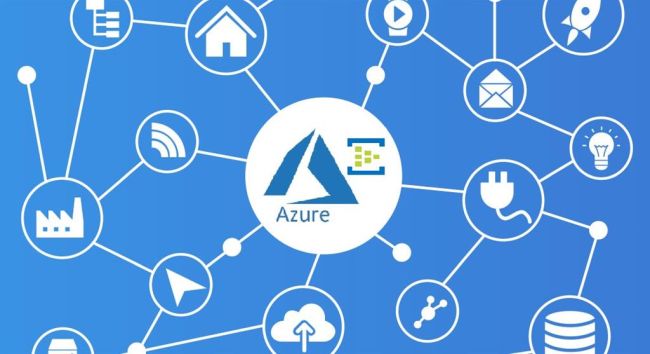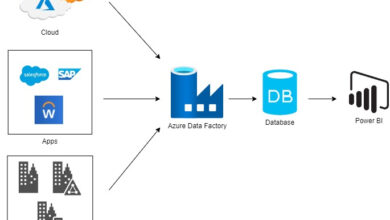Discovering Azure Cognitive Services
Introduction
In the fast-paced world of technology, artificial intelligence (AI) is revolutionizing the way we interact with machines. Microsoft’s Azure Cognitive Services is a powerful suite of AI tools and APIs that showcase the incredible potential of AI in various applications, from language understanding to computer vision. This article explores the capabilities of Azure Cognitive Services, its practical applications, and its role in shaping the future of intelligent software.
The Power of Azure Cognitive Services
Azure Cognitive Services aims to bridge the gap between humans and machines by infusing applications with cognitive capabilities. These capabilities include vision, speech, language, and decision-making, enabling applications to perceive and interpret the world in a human-like manner.
An Extensive Range of Capabilities
Azure Cognitive Services offers a wide range of capabilities that address specific challenges:
Computer Vision: Understanding Visual Information
Computer Vision allows applications to understand, process, and interact with images and videos, transforming raw visual data into meaningful insights.
Key Features
- Object Detection: Identify and locate objects in images, enabling applications to recognize specific entities or products.
- Facial Recognition: Detect and analyze faces, providing age, gender, emotion detection, and user authentication.
- Optical Character Recognition (OCR): Extract text from images, making it machine-readable.
- Scene Understanding: Gain context from images by identifying objects and scenarios, enhancing visual data interpretation.
Speech Services: Natural Language Interaction
Speech Services enable applications to understand spoken language, convert it to text, and synthesize speech for more natural interactions.
Key Features
- Speech-to-Text: Convert spoken language into written text, facilitating voice commands, transcription, and voice search.
- Text-to-Speech: Transform text into natural-sounding speech, creating a personalized and engaging user experience.
- Translation: Enable real-time language translation, breaking language barriers and fostering global communication.
Language Understanding: Processing Human Language
Language Understanding empowers applications to comprehend and process human language, making interactions more meaningful and context-aware.
Key Features
- Intent Recognition: Identify the intention behind user input, allowing applications to respond accurately.
- Entity Recognition: Extract specific information, such as names, dates, and locations, from text.
- Sentiment Analysis: Determine the sentiment behind text, providing insights into user opinions.
- Language Translation: Translate text between languages, facilitating multilingual communication.
Decision Making: Data-Driven Insights
Decision-making capabilities use AI to analyze data, detect patterns, and make informed decisions.
Key Features
- Anomaly Detection: Identify anomalies or outliers in data, enabling proactive responses to irregularities.
- Content Moderation: Filter and moderate content to ensure compliance with guidelines and user safety.
Search Services: Unleashing Data Insights
Azure Cognitive Search provides powerful search capabilities over vast amounts of data.
Key Features
- Searchable Data: Index and search through structured and unstructured data, enhancing data discoverability.
- Faceted Navigation: Allow users to filter and refine search results using facets, improving the search experience.
- Synonyms and Spelling Correction: Improve search accuracy by handling synonyms and correcting spelling errors.
Practical Applications in Various Industries
- Healthcare: Computer Vision assists radiologists in diagnosing diseases from medical images, while Language Understanding enables virtual assistants for patient interactions.
- Retail: Computer Vision automates inventory management by recognizing products on shelves, and Search Services enhance e-commerce search functionality.
- Finance: Decision-making capabilities detect anomalies in financial data, and Language Understanding powers chatbots for customer inquiries.
- Education: Speech Services provide transcription services for lectures, and Language Understanding enables interactive language learning applications.
Simple Development and Integration
Azure Cognitive Services stands out for its user-friendly approach to AI integration. Developers, regardless of their AI expertise, can easily incorporate cognitive capabilities into their applications using simple APIs. This democratization of AI empowers developers with varying skill levels to create intelligent applications without extensive machine learning knowledge.
Security and Privacy
Azure Cognitive Services prioritizes data privacy and security. User data used for training models is anonymized, and the service complies with industry-standard regulations to protect user privacy.
Conclusion
Azure Cognitive Services represents the incredible potential of AI, elevating applications to new levels of intelligence and user engagement. With a comprehensive suite of capabilities, developers can create applications that understand, interpret, and interact with the world in a human-like manner. As industries continue to embrace AI for innovation, Skrots also provides similar services and solutions. Visit Skrots to learn more about AI-powered technologies, and explore our range of services at Skrots Services. Join us on our Blog at Skrots where we share insightful articles on the latest trends and advancements in AI.




